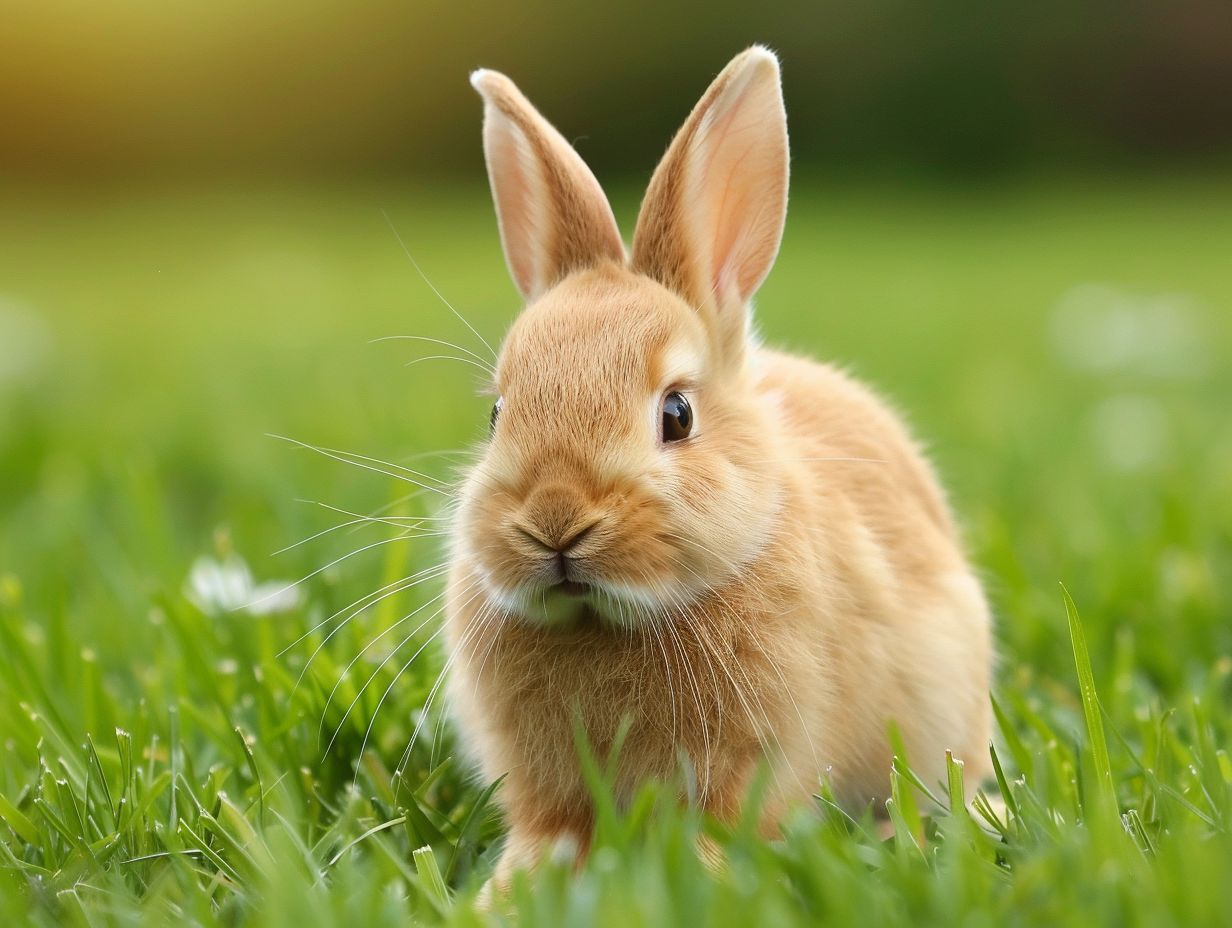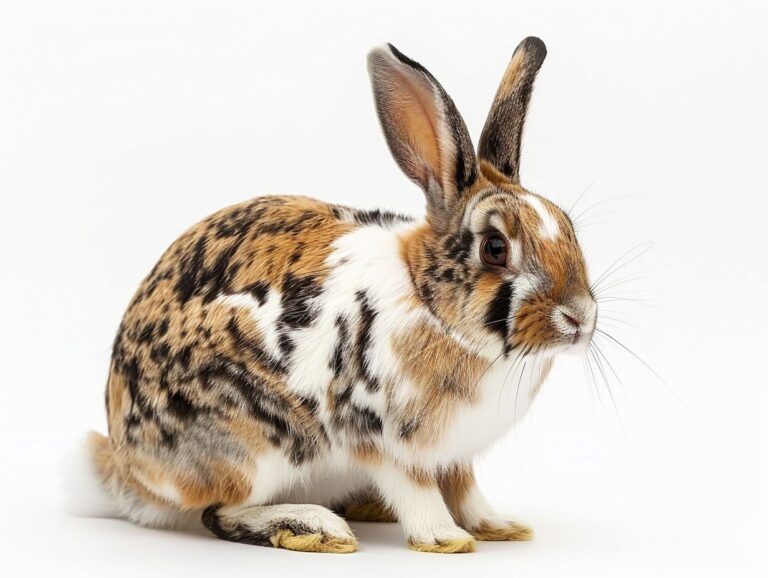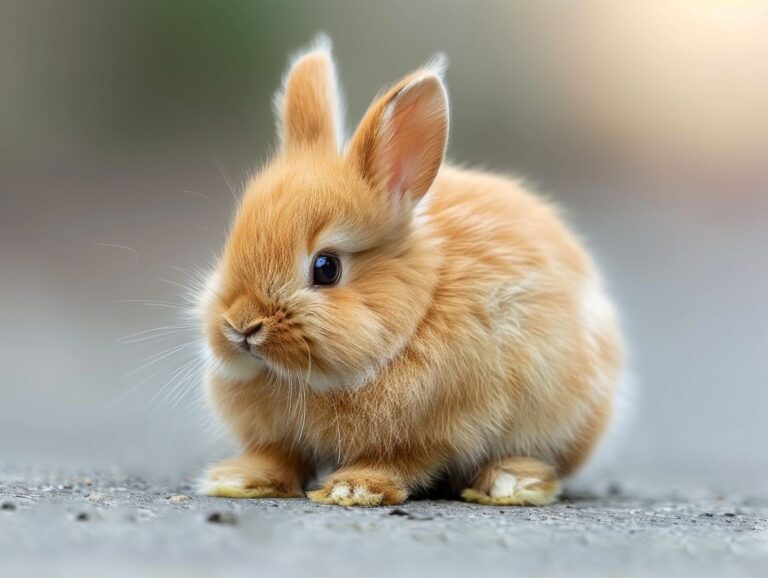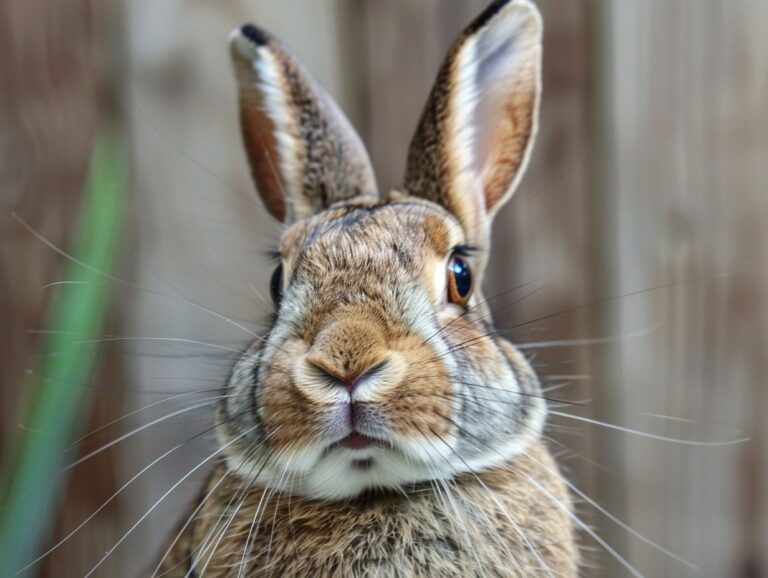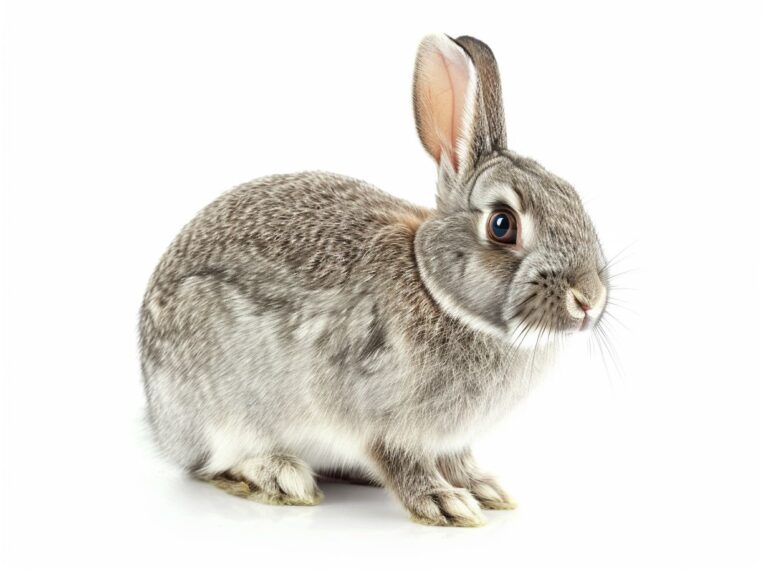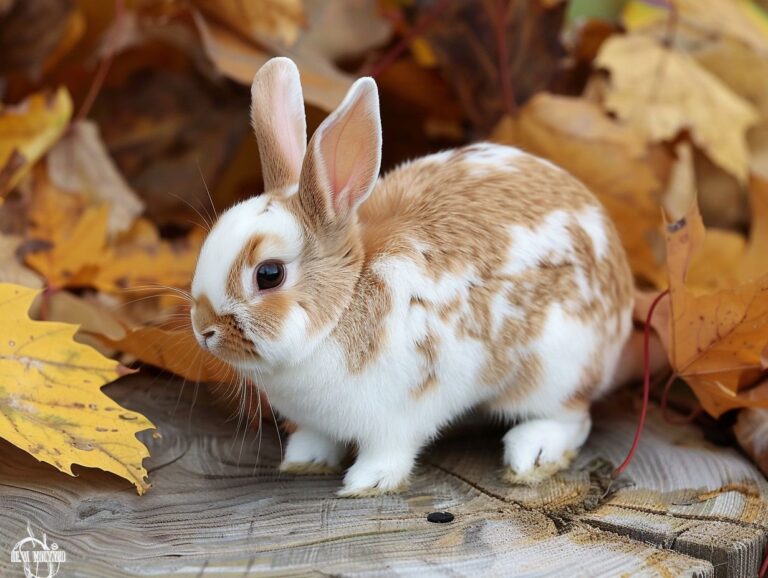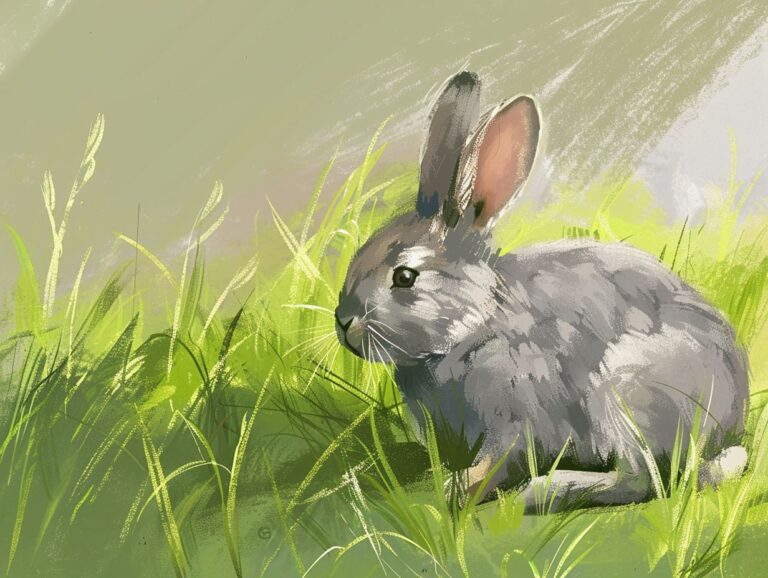Tan Rabbit Breed: Characteristics, Care, History, and Breeding Practices
Curious about the unique Tan Rabbit breed? This article will take you through the history, characteristics, and care needs of these adorable rabbits.
We will cover their physical appearance, temperament, health issues, and breeding practices. Whether you are a current Tan Rabbit owner or considering adding one to your family, this comprehensive guide will provide you with all the information you need to care for and appreciate these charming pets.
Key Takeaways:
What Is the Tan Rabbit Breed?
The Tan Rabbit breed is a part of the fancy rabbit breeds known for their elegant appearance and unique tan markings. Originating from England, specifically the English county of Derbyshire, Tan Rabbits have gained popularity for their aristocrat tan, chocolate tan, and lilac tan color varieties.
Tan Rabbits have a rich history dating back to the 19th century when they were initially bred for their striking tan fur, which was highly sought after in the fur trade. Their distinct markings and gentle temperament quickly made them a favorite among rabbit enthusiasts.
- One of the notable features of Tan Rabbits is their sleek, short coats that require minimal grooming, making them relatively low-maintenance pets.
- These rabbits are known for their curious and playful nature, often charming their owners with their inquisitive behavior.
The popularity of Tan Rabbits has spread far beyond Derbyshire, with breeders worldwide continuing to preserve and enhance the breed’s unique characteristics.
History of the Tan Rabbit Breed
The history of the Tan Rabbit breed traces back to its ancestors, including European wild rabbits and Dutch rabbits, with development and refinement primarily in the English county of Derbyshire. The breed’s journey includes recognition by breed clubs like the American Rabbit Breeders Association (ARBA) and the National Tan Rabbit Club.
As the Tan Rabbit breed evolved, it gained popularity not only for its beautiful appearance but also for its friendly and gentle temperament, making it a beloved choice for both breeders and pet owners. The breed standards for Tan Rabbits have been meticulously outlined by organizations such as ARBA, ensuring that breeders adhere to specific guidelines to maintain the breed’s unique characteristics.
The Tan Rabbit’s distinctive tan coat and marked points, in combination with its alert and friendly demeanor, have won the hearts of many enthusiasts worldwide. With its roots in Europe and further refinement across continents, the Tan Rabbit stands as a testament to centuries of careful breeding and dedication to preserving its heritage.
What Are the Characteristics of the Tan Rabbit Breed?
The Tan Rabbit breed is characterized by its full arch body type, flyback coat, and distinctive tan markings that set them apart as show rabbits. With a rich history and recognized standards by organizations like the American Rabbit Breeders Association and the American Tan Rabbit Speciality Club, these rabbits are bred for their elegance and grace.
Regarding the physical attributes of Tan Rabbits, one cannot ignore their compact yet well-rounded bodies that boast a striking full arch from the shoulders to the hindquarters, a key feature that is highly sought-after in the world of Show Rabbits. Their flyback coat, known for its dense and glossy texture, adds to their overall allure on the show table.
What truly distinguishes Tan Rabbits are their remarkable tan markings, which consist of rich shades of tan on the belly, inside of the legs, the eye circles, and nostril outlines. These markings must be exhibited with precision and clarity as per the specific standards set by show rabbit enthusiasts.
Physical Appearance
The Tan Rabbit breed showcases a stunning physical appearance characterized by a full arch body type inspired by Dutch rabbits, with sleek flyback coats that highlight their elegant tan markings. These features make Tan Rabbits stand out among the fancy rabbit breeds as specimens of beauty and grace.
These rabbits have a compact yet well-proportioned body shape that exudes a sense of elegance and poise. Their fur is soft and glossy, adding to their overall charm. The distinctive tan markings, often in shades ranging from light fawn to rich chocolate, create a captivating contrast against their sleek coat.
Whether in shows or as beloved pets, Tan Rabbits never fail to capture attention with their unique blend of Dutch heritage and fancy breed allure. Their striking appearance and gentle demeanor make them a favorite among rabbit enthusiasts worldwide.
Temperament
Tan Rabbits are known for their gentle temperament and amiable nature, making them suitable as pets for families and individuals alike. Their hypoallergenic qualities add to their appeal, ensuring a harmonious coexistence with those prone to allergies.
Rabbit Behavior plays a crucial role in characterizing Tan Rabbits as docile creatures that thrive on human companionship. These rabbits exhibit social behaviors, enjoying interactions and forming bonds with their owners. Their calm demeanor makes them easy to handle, ideal for first-time pet owners looking for a loving companion.
The hypoallergenic nature of Tan Rabbits sets them apart in the pet world. For individuals with allergies, these rabbits provide a safe option, as they produce fewer allergens than other breeds. This makes them a delightful choice for households where allergy sensitivity is a concern.
Health and Care Needs

Tan Rabbits require a balanced diet rich in fiber, including hay, fresh vegetables, and pellets to avoid gastrointestinal problems. Regular veterinary check-ups are crucial to detect any health concerns early.
Ensuring a clean and spacious living environment is key, as proper hygiene plays a significant role in preventing diseases such as flystrike. Providing ample opportunities for exercise and mental stimulation promotes their overall well-being.
How to Care for a Tan Rabbit?
Caring for a Tan Rabbit involves providing suitable housing and environment that mimics their natural habitat, ensuring they have ample space and comfort. A balanced diet rich in nutrients is essential for their well-being and longevity.
Rabbit Housing should include a spacious enclosure with separate areas for eating, sleeping, and exercising. Ensure the enclosure has proper ventilation and is kept clean to prevent health issues. Providing hiding spots and toys will help prevent boredom and promote mental stimulation.
Regarding Rabbit Feeding, a diet primarily consisting of hay, fresh vegetables, and limited commercial rabbit pellets is recommended. Water should always be available in a clean, non-spill container, and treats should be given in moderation to prevent digestive issues.
Housing and Environment
Creating a conducive housing and environment setup for Tan Rabbits involves providing adequate space for exercise and mental stimulation, fostering their physical and mental well-being. Training routines can also enhance their socialization and engagement.
When housing Tan Rabbits, it is crucial to offer them an appropriate enclosure that allows for hopping, stretching, and exploring their surroundings. Rabbit Exercise plays a vital role in preventing obesity and maintaining their cardiovascular health. Incorporating a variety of toys, tunnels, and hiding spots not only adds enrichment but also stimulates their natural behaviors. Introducing different textures, like hay or safe chew toys, helps to keep their teeth healthy.
Moreover, Rabbit Training provides mental stimulation and strengthens the bond between rabbits and their owners. Positive reinforcement techniques can be used to teach them tricks and obedience, enhancing their overall well-being. By dedicating time to training sessions, you can build trust, reduce stress, and encourage positive behaviors in your Tan Rabbits
Diet and Nutrition
A well-rounded diet comprising Rabbit Feeding essentials like hay, fresh vegetables, and commercial rabbit pellets is crucial for the nutritional needs of Tan Rabbits. Regular grooming practices help maintain their coat health and hygiene, contributing to their overall well-being.
Hay is a staple for Tan Rabbits as it aids in digestion and keeps their teeth healthy. Fresh vegetables such as dark leafy greens provide essential vitamins and minerals. Commercial rabbit pellets offer a balanced mix of nutrients necessary for their well-being.
In terms of grooming, regular brushing not only prevents matting and hairballs but also strengthens the bond between you and your rabbit. Checking their nails monthly and providing adequate exercise are also key aspects of proper grooming.
Grooming and Hygiene
Grooming plays a vital role in the hygiene and well-being of Tan Rabbits, as regular grooming sessions help prevent matting and maintain coat cleanliness. Attention to grooming is essential, especially in breeding programs and housing arrangements.
Proper grooming not only keeps the rabbit’s fur in good condition but also helps in early detection of any health issues or abnormalities. It is recommended to use a gentle brush and comb to remove loose hair and prevent tangles.
Polish rabbit breed also promotes bonding between the rabbit and its owner, creating a sense of trust and comfort. In breeding programs, grooming ensures that the rabbits are in optimal health for reproduction, reducing the risk of infections.
Regarding housing, clean bedding and a well-ventilated environment are crucial for maintaining the rabbit’s hygiene. Regularly cleaning the living space and providing fresh water and food contribute to overall well-being.
Common Health Issues of Tan Rabbits
Tan Rabbits may encounter common health issues such as malocclusion, snuffles, and ear mites, which require prompt veterinary attention to ensure their well-being. Preventative measures against conditions like flystrike are crucial for maintaining their health.
Identification of symptoms is vital to address health problems in Tan Rabbits effectively. Symptoms of myiasis, also known as flystrike, include restlessness, decreased appetite, and soiled fur around the hindquarters. If left untreated, flystrike can lead to severe skin infections and even death. Treatment options for flystrike involve carefully removing maggots, cleaning the affected area, and administering antibiotics to prevent secondary infections.
Malocclusion

When dealing with malocclusion in Tan Rabbits, it is vital to pay attention to their dental care practices. Regular check-ups by a specialized veterinarian familiar with rabbit oral health are crucial to detect and manage any teeth alignment issues promptly.
Proper diet plays a significant role in preventing further complications. Ensuring a diet rich in fiber can help wear down their teeth naturally. Providing suitable chew toys can aid in maintaining proper dental alignment. Learn more about the Florida White rabbit breed and its characteristics.
Collaborating with rabbit organizations such as the Rabbit Council and breed-specific clubs like Holland Lop can provide valuable resources and support for Tan Rabbit owners facing malocclusion challenges.
Snuffles
Snuffles, a respiratory condition common in rabbits, can impact Tan Rabbits’ health and well-being, necessitating effective treatment and care. Proper nutrition and hygiene practices, along with guidance from experts like French Angora breeders, can aid in managing snuffles.
Proper nutrition is crucial in supporting New Zealand rabbit breed with snuffles, as a well-balanced diet helps boost immunity and overall health. High-quality hay, fresh vegetables, and limited treats can provide the necessary nutrients for their recovery. Keeping their living environment clean and dry plays a key role in preventing the recurrence of respiratory issues.
Seeking advice from knowledgeable professionals, such as experienced French Angora breeders, can offer valuable insights into managing snuffles effectively. These experts can provide specific care recommendations tailored to the individual needs of Tan Rabbits, improving their chances of a full recovery.
Ear Mites
Ear mites, a common parasitic issue affecting rabbits, can cause discomfort and irritation in Tan Rabbits’ ears, impacting their well-being. Understanding rabbit behavior cues and consulting with experts like Californians breeders can aid in treating and preventing ear mite infestations.
One of the key signs that a Tan Rabbit may be suffering from ear mites is excessive scratching or rubbing of their ears, often leading to hair loss in that area. Affected rabbits may show increased head shaking or tilting, accompanied by a strong odor emanating from the ears.
If any of these behaviors are observed, seeking guidance from experienced breeders, particularly those specializing in Californians, can provide crucial insights into effective treatment methods and preventive measures. These experts can offer tailored advice based on their expertise with specific rabbit breeds, ensuring the well-being of your Tan Rabbit.
How to Breed Tan Rabbits?
Breeding Tan Rabbits involves a meticulous process of selecting breeding stock based on desired color varieties, body types, and temperament.
When embarking on a Netherland dwarf rabbit breed journey, it is crucial to consider the lineage and genetics of potential breeding pairs to ensure the desired characteristics are passed down to the offspring. Mating practices should be carefully planned, taking into account factors such as age, health, and compatibility of the rabbits.
During pregnancy, providing a stress-free environment, proper nutrition, and regular veterinary check-ups are vital for the well-being of the doe and the developing kits. Post-birth, attentive care is necessary for the newborn kits, including maintaining optimal conditions in the nesting area and monitoring their growth and health.
Selecting Breeding Stock
Choosing breeding stock for Tan Rabbits involves assessing lineage, health records, and conformation to breed standards, ensuring the preservation of desirable traits and adherence to breed guidelines. Practicing responsible rabbit husbandry, especially in Derbyshire‘s heritage, is key to maintaining breed integrity.
When selecting breeding stock for Tan Rabbits, it’s crucial to delve into the lineage of the rabbits to trace their heritage and genetic background.
- Health records play a significant role in determining the overall well-being and fitness of the prospective breeding rabbits. Ensuring they are free from hereditary diseases and have a clean bill of health is essential for producing robust offspring.
Mating and Pregnancy
Mating and pregnancy in Tan Rabbits require attention to nutritional needs, nesting preparations, and monitoring doe health throughout the gestation period. Consultations with breeders experienced in rabbit care, such as those specializing in Belgian Hare, can offer valuable insights into best practices.
Proper nutrition plays a crucial role in successful mating and pregnancy for Tan Rabbits. It is essential to provide a balanced diet rich in fiber, proteins, and essential vitamins. Fresh hay, vegetables, and high-quality pellets are key components of their diet during this critical period.
Regarding nesting, Alaskan rabbit breeds prefer a quiet, secluded area to build their nest. Providing them with suitable nesting materials like straw and fur will allow the doe to create a comfortable and safe space for her litter.
Regular check-ups and monitoring of the doe’s health are imperative throughout the pregnancy. Any signs of distress or abnormalities should be promptly addressed by consulting a knowledgeable rabbit breeder, especially one specializing in Belgian Hare, for guidance and assistance.
Care for Pregnant Doe and Kits

Creating a peaceful nesting area for the doe is essential. This should be secluded, quiet, and away from any potential disturbances. Tan Rabbits, including the pregnant doe, benefit greatly from regular Rabbit Exercise to promote circulation and overall well-being.
As for dietary needs, ensuring the doe has a diet rich in fiber, high-quality pellets, fresh hay, and a variety of greens is vital during pregnancy and lactation. It not only supports her health but also contributes to the well-being of the kits.
Selling and Showing Tan Rabbits
Selling and showing Tan Rabbits at exhibitions and rabbit shows is a rewarding experience that showcases the breed’s elegance and unique features. Participation in events in the English county of Derbyshire and beyond offers opportunities to promote the Tan Rabbit breed and engage with the rabbit enthusiast community.
Exhibiting Tan Rabbits involves a meticulous process of grooming, conditioning, and training the rabbits to adhere to breed standards. Showmanship plays a critical role in presenting the rabbits to judges, highlighting their best attributes and conforming to established guidelines. Rabbit shows in the English County of Derbyshire attract participants from various regions, fostering a sense of camaraderie and healthy competition among breeders and enthusiasts alike.
Frequently Asked Questions
What are the main characteristics of the Tan rabbit breed?
The Tan rabbit breed is known for its unique tan color, with shades ranging from light fawn to dark cinnamon. They also have short, smooth fur and a medium-sized body. Tans are known for their docile and friendly personalities, making them great pets for families.
How should I care for my Tan rabbit?
Tans are generally low maintenance animals, but they do require a few basic care practices. These include providing a clean and spacious living area, a balanced diet of hay and fresh vegetables, and regular grooming to keep their fur healthy. It is also important to socialize and handle your Tan rabbit regularly to maintain their friendly nature.
What is the history behind the Tan rabbit breed?
The Tan rabbit breed originated in England in the early 1900s and was developed by crossing wild rabbits with domestic breeds. They were first recognized as a distinct breed in 1923 and have since become popular as both show rabbits and pets. Tans were initially bred for their unique tan color, but they have also gained a reputation for their calm and gentle nature.
Can I breed my Tan rabbit?
Yes, Tans can be bred for both show and companionship purposes. However, breeding should be done responsibly, and it is recommended to seek guidance from experienced breeders. It is important to ensure that both the male and female rabbits are healthy and that proper care is taken during the breeding process to ensure the health of the offspring.
What are some best practices for breeding Tans?
When breeding Tans, it is important to introduce the male and female rabbits properly, provide a comfortable and clean breeding environment, and monitor the pregnancy closely. It is also recommended to consult with a veterinarian for any potential health concerns or complications during the breeding process. Responsible breeding practices are essential to maintain the health and quality of the breed.
Are there any common health issues with Tan rabbits?
Like all rabbit breeds, Tans are susceptible to certain health issues, including dental problems, respiratory infections, and digestive issues. As a owner, it is important to monitor your rabbit’s health and seek medical attention if you notice any symptoms. Regular check-ups with a veterinarian can help prevent and detect any potential health issues early on.

